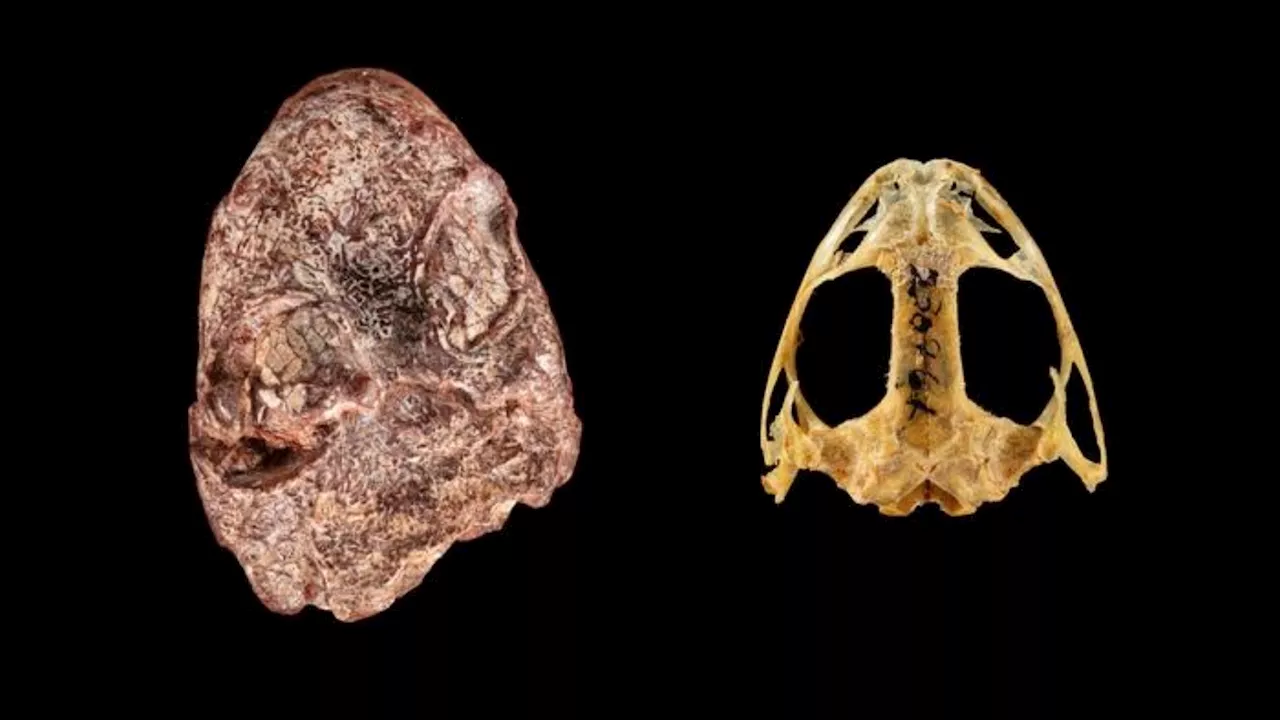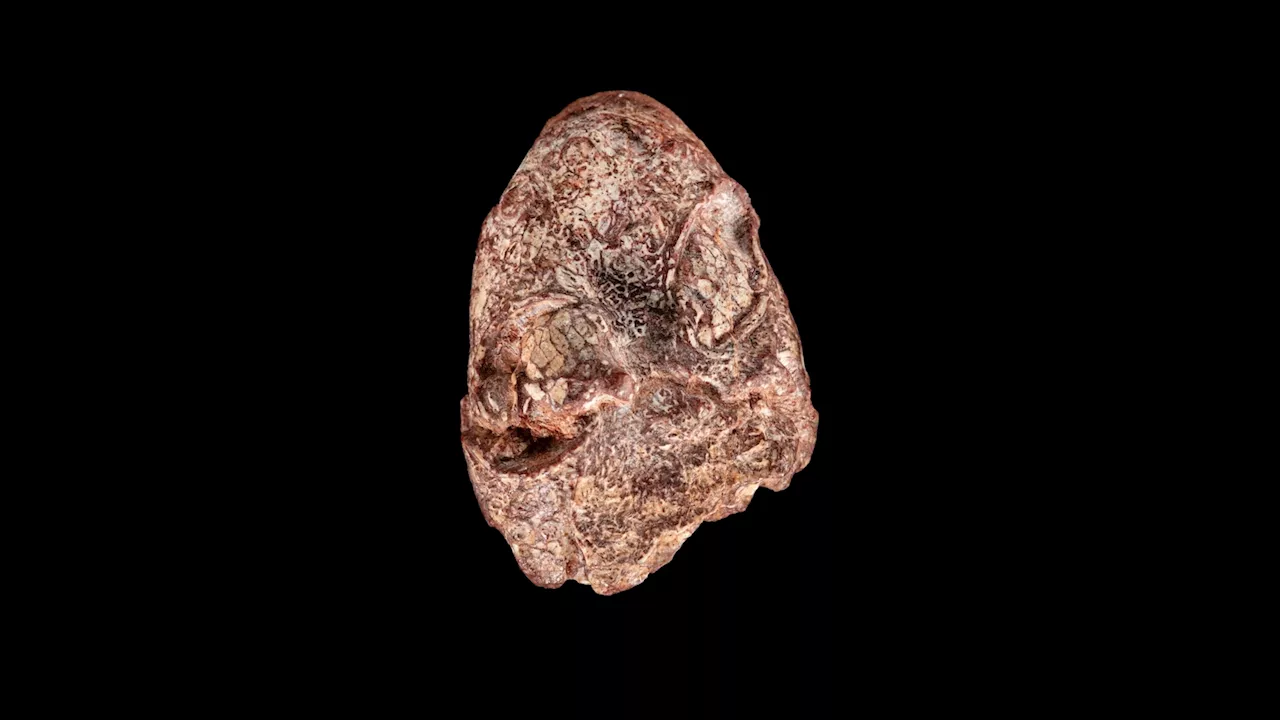Researchers named the species Kermitus after Kermit the Frog.
Newly discovered proto-amphibian, Kermitops from the Department of Paleobiology collections at the Smithsonian Institution National Museum of Natural History. The species is named after Kermit the Frog.The fossilized skull of the 270-million-year-old amphibian ancestor was first unearthed in 1984 in a rock formation in Texas.
Calvin So, a doctoral student at the George Washington University and the paper's lead author, said naming the creature after the beloved character is also an opportunity to get the public excited about the discovery. Researchers said they discovered the fossil was a type of temnospondyl, a primitive amphibian that lived more than 200 million years ago mainly during the the Carboniferous, Permian and Triassic periods.
This head shape suggests the animal ate grubs -- which are the larval form of certain beetle species -- and other small insects, similar to frogs and salamanders.
United States Latest News, United States Headlines
Similar News:You can also read news stories similar to this one that we have collected from other news sources.
 Another Hycean Planet Found? TOI-270 dHycean worlds are still largely hypothetical. But if they're out there, the JWST could be our key to confirming them.
Another Hycean Planet Found? TOI-270 dHycean worlds are still largely hypothetical. But if they're out there, the JWST could be our key to confirming them.
Read more »
 More than 270 arrested in spring break crack-down in Miami Beach, authorities sayAt least 270 people were arrested across Miami Beach so far this month during spring break, according to authorities.
More than 270 arrested in spring break crack-down in Miami Beach, authorities sayAt least 270 people were arrested across Miami Beach so far this month during spring break, according to authorities.
Read more »
 270-million-year-old fossilized amphibian skull discoveredThis ancient amphibian ancestor's skull was discovered in the collections of the Smithsonian’s National Museum of Natural History.
270-million-year-old fossilized amphibian skull discoveredThis ancient amphibian ancestor's skull was discovered in the collections of the Smithsonian’s National Museum of Natural History.
Read more »
 Researchers develop molecules for a new class of antibiotics that can overcome drug resistant bacteriaAbout a decade ago, researchers began to observe a recurring challenge in their research: Some of the compounds they were developing to harness energy from bacteria were instead killing the microbes. Not good if the objective of the project was to harness the metabolism of living bacteria to produce electricity.
Researchers develop molecules for a new class of antibiotics that can overcome drug resistant bacteriaAbout a decade ago, researchers began to observe a recurring challenge in their research: Some of the compounds they were developing to harness energy from bacteria were instead killing the microbes. Not good if the objective of the project was to harness the metabolism of living bacteria to produce electricity.
Read more »
 Researchers develop new glowing touchscreen that works underwaterScientists have made a breakthrough with an ALP facilitating underwater communication. Check out how this could be a game-changer for us.
Researchers develop new glowing touchscreen that works underwaterScientists have made a breakthrough with an ALP facilitating underwater communication. Check out how this could be a game-changer for us.
Read more »
 Researchers invent new triple-junction tandem solar cells with world-record efficiencyScientists have developed a novel triple-junction perovskite/Si tandem solar cell that can achieve a certified world-record power conversion efficiency of 27.1 per cent across a solar energy absorption area of 1 sq cm, representing the best-performing triple-junction perovskite/Si tandem solar cell thus far.
Researchers invent new triple-junction tandem solar cells with world-record efficiencyScientists have developed a novel triple-junction perovskite/Si tandem solar cell that can achieve a certified world-record power conversion efficiency of 27.1 per cent across a solar energy absorption area of 1 sq cm, representing the best-performing triple-junction perovskite/Si tandem solar cell thus far.
Read more »
